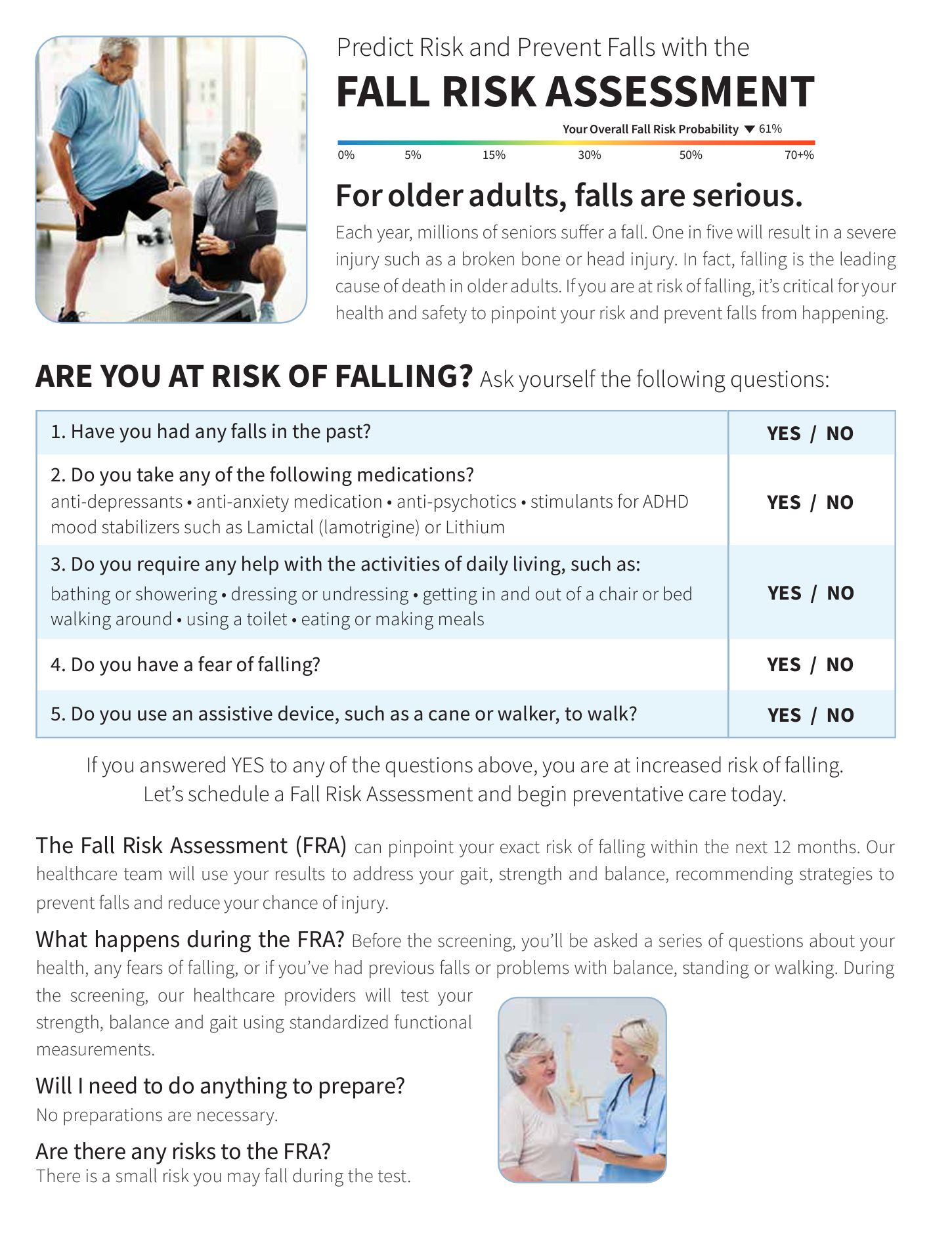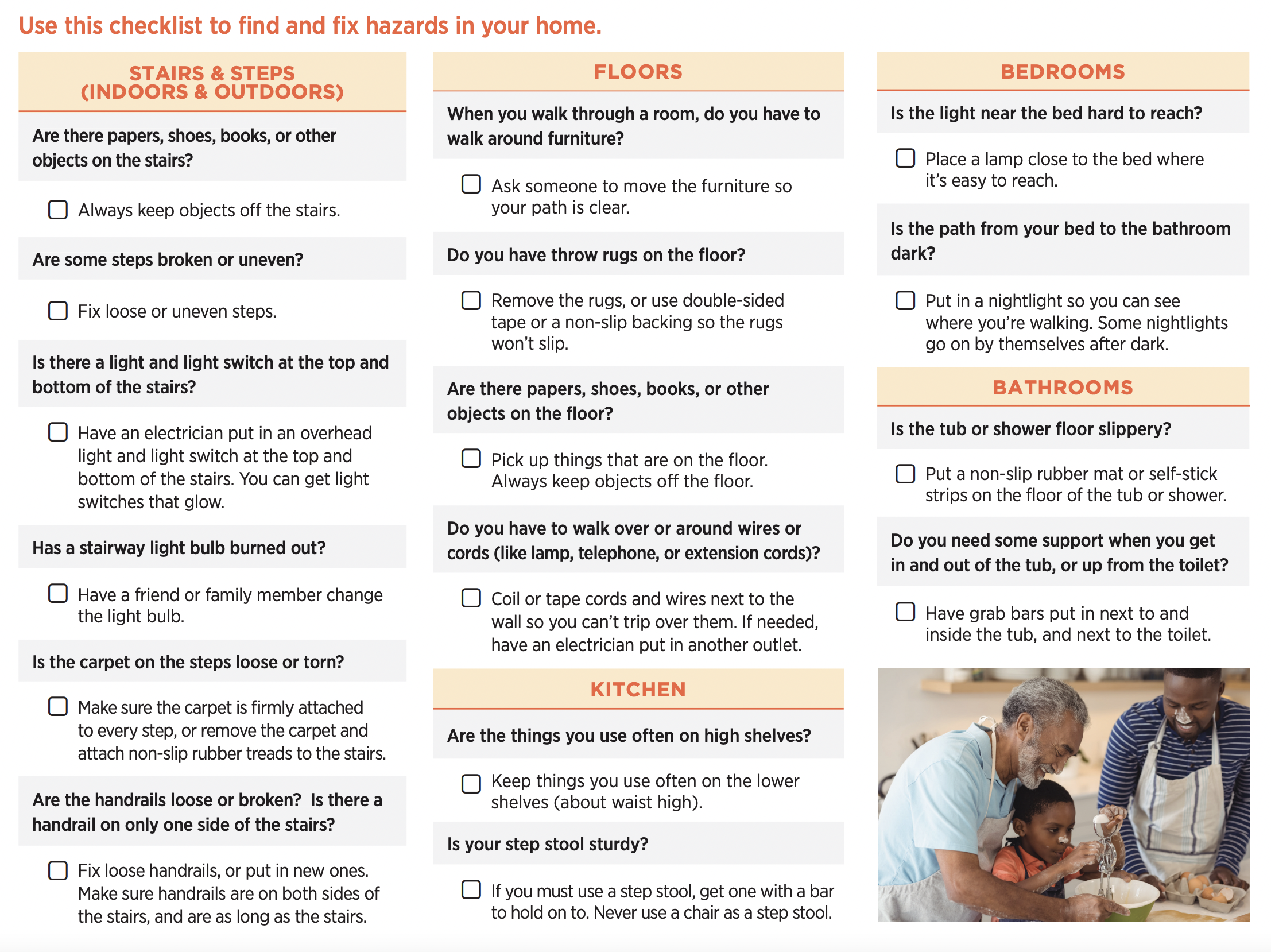The Definitive Guide to Dementia Fall Risk
The Definitive Guide to Dementia Fall Risk
Blog Article
The Dementia Fall Risk Ideas
Table of ContentsHow Dementia Fall Risk can Save You Time, Stress, and Money.Dementia Fall Risk Can Be Fun For EveryoneAbout Dementia Fall RiskSome Ideas on Dementia Fall Risk You Need To KnowThe 6-Second Trick For Dementia Fall Risk
In the community, poor road lighting or unsafe creeks and land fills might also cause crashes. Falls Risk Analysis Tool (FRAT) is a 4-item falls-risk screening device for sub-acute and property care. The FRAT has three areas: drop threat condition, danger aspect checklist, and action strategy. An Autumn Danger Condition consists of data concerning background of current falls, drugs, mental and cognitive standing of the patient.If the person scores on a threat variable, the equivalent number of factors are counted to the patient's autumn danger rating in the box to the far. If an individual's fall threat rating totals five or greater, the person goes to high threat for drops. If the individual ratings only four points or lower, they are still at some risk of dropping, and the nurse must utilize their best medical analysis to take care of all autumn danger factors as component of a holistic care plan.
These common approaches, in general, help create a secure atmosphere that decreases accidental drops and defines core preventive actions for all individuals. Indications are vital for people at danger for falls.
About Dementia Fall Risk
Wristbands must consist of the person's last and first name, date of birth, and NHS number in the UK. Only red color ought to be utilized to signify unique person status.
Items that are as well much may require the individual to get to out or ambulate unnecessarily and can potentially be a threat or add to drops. Helps avoid the patient from going out of bed with no support. Nurses respond to fallers' call lights faster than they do to lights initiated by non-fallers.
Visual impairment can considerably trigger falls. Hip pads, when worn appropriately, may decrease a hip fracture when loss takes place. Maintaining the beds closer to the flooring minimizes the danger of falls and serious injury. Placing the mattress on the flooring dramatically lowers loss danger in some health care settings. Low beds are designed to lessen the range an individual falls after moving out of bed.
The Ultimate Guide To Dementia Fall Risk
Patients who are high and with weak leg muscles who attempt to remain on the bed from a standing setting are most likely to drop onto the bed since it's also low for them to reduce themselves securely. Also, if a tall person attempts to get up from a reduced bed without support, the individual is most likely to fall back down onto the bed or miss the bed and drop onto the flooring.
They're made to advertise prompt rescue, not to prevent falls from bed. Aside from bed alarms, increased supervision for high-risk patients also may help prevent falls.

Individuals with an evasion read review gait boost loss opportunities considerably. To minimize autumn danger, shoes need to be with a little to no heel, slim soles with slip-resistant walk, and support the ankles.
Dementia Fall Risk Can Be Fun For Anyone
Individuals, especially older grownups, have lowered visual ability. Illumination an unfamiliar setting helps raise exposure if the person need to rise at night. In a study, homes with appropriate lighting record fewer falls (Ramulu et al., 2021). Renovation in illumination at home may lower fall prices in older adults (Dementia Fall Risk). The use of stride belts by all health treatment carriers can promote safety when helping people with transfers from bed to chair.

Caretakers are effective for ensuring a safe and secure, protected, and safe atmosphere. Nonetheless, researches showed really low-certainty evidence that sitters decrease fall danger in intense treatment hospitals and only moderate-certainty that options like video monitoring can decrease sitter use without boosting autumn threat, recommending that caretakers are not as valuable as originally thought go now (Greely et al., 2020).
Some Known Facts About Dementia Fall Risk.

Increased physical fitness minimizes the risk for drops and limits injury that is sustained when loss transpires. Land and water-based workout programs may be in a similar way helpful on balance and stride and consequently decrease the danger for drops. Water exercise might contribute a favorable benefit on balance and stride for women 65 years and older.
Chair Surge Exercise is a simple sit-to-stand workout that helps reinforce the muscles in the upper legs and buttocks and enhances movement and freedom. The goal is to do Chair Surge exercises without utilizing hands as the customer ends up being more powerful. See resources area for a detailed guideline on how to do Chair Rise exercise.
Report this page